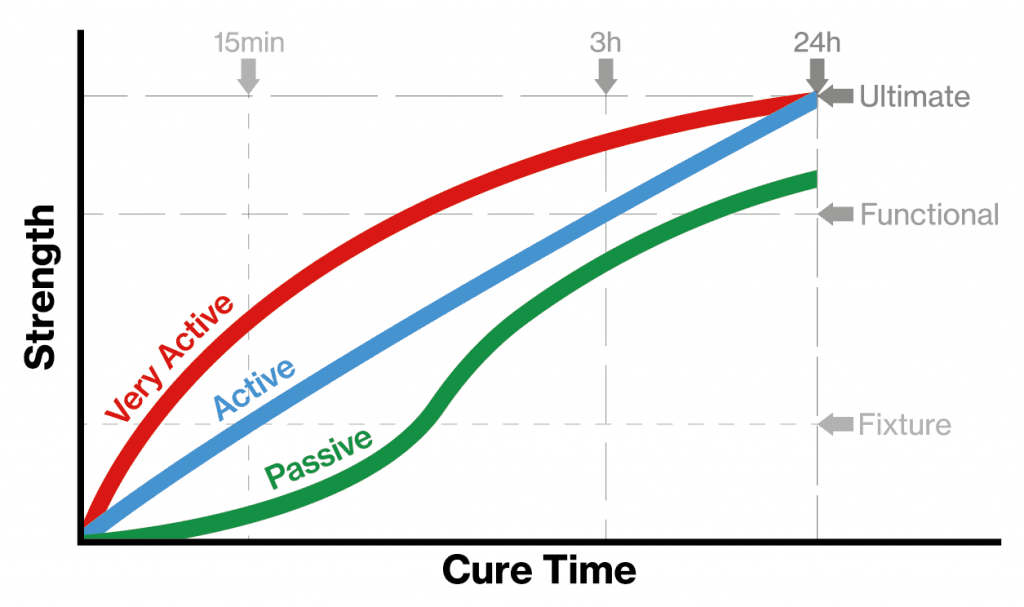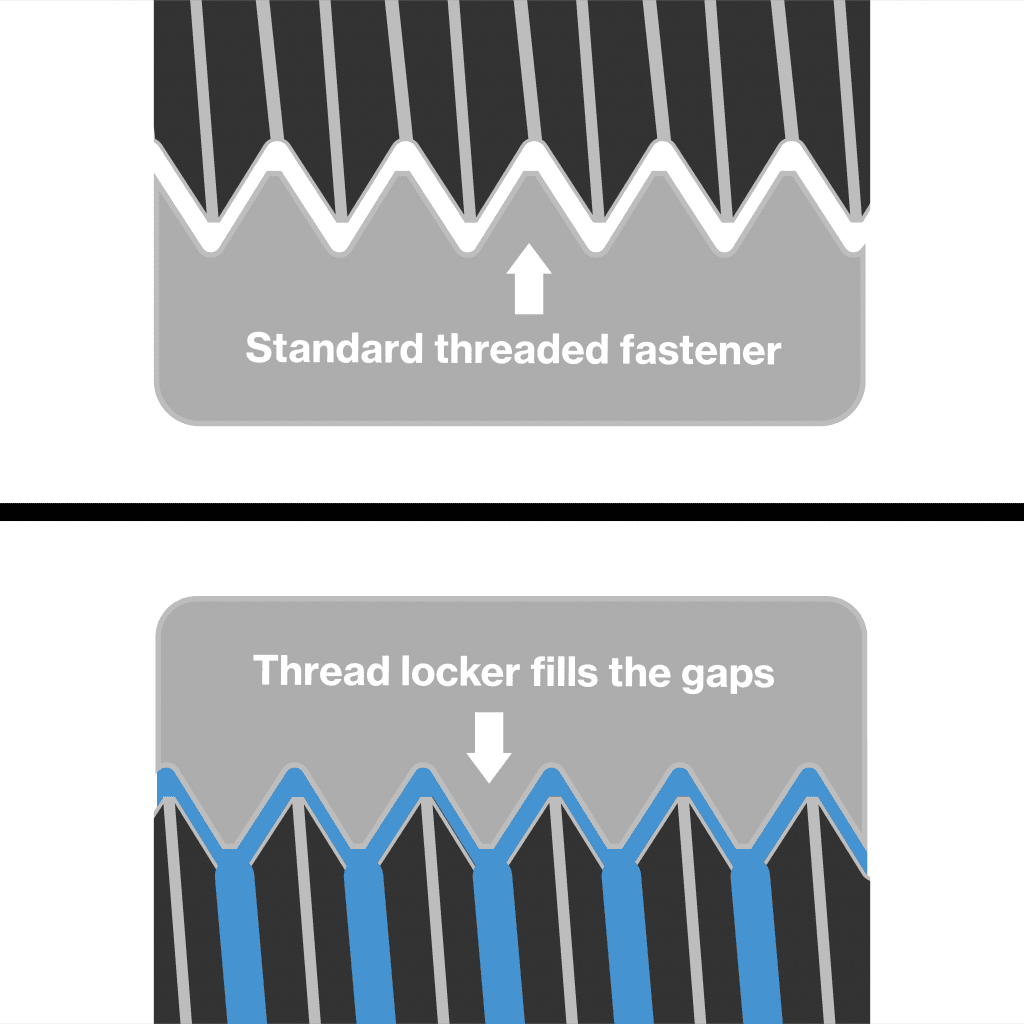What are Threadlockers?
What are threadlockers? Lockfast threadlockers are anaerobic adhesives used to lock threaded fasteners.
What has exercise got to do with it?
Absolutely nothing! Exercise is commonly associated with the term aerobic (with oxygen). Anaerobic means without oxygen, the opposite of aerobic. Anaerobic adhesives cure via a free-radical process, and they will not cure in the presence of air. The reaction begins with metal ions being present, followed by air being locked out. As a result, anaerobic adhesives such as threadlockers are well suited for locking threaded fasteners such as nuts and bolts.
Reactive chemistry
Since anaerobic adhesives are 100% reactive, their initial fixing time can vary depending on the substrate. As a result of the presence of more metal ions, more reactive substrates, such as copper, brass, bronze, iron, and mild steel, can be fixed in a shorter period, compared to “passive” substrates such as stainless steel, aluminium, galvanized, zinc phosphate, silver, oxide films, chromate finishes, anodic coatings, plastics, and ceramics. They may take longer to fix, but they are still fast. Ultimate strength is usually reached after 24 hours.

Fixture time vs substrate reactivity graph
(The graph depicted above is not scientific and is for illustrative purposes only.)
Why choose anaerobic adhesives over mechanical methods?
As Lockfast® Threadlockers replace the need to hold a variety of types and sizes of traditional fasteners, such as lock washers, split pins, and nylon lock nuts, holding a few grades can be less expensive. There is only a need for a few drops per application (depending on thread size).

Threadlocker application – Illustrated.
What are the physical benefits?
Lockfast® Threadlockers cure in the joint, so they are clean and easy to use. By filling the gap between the mating threads, they prevent corrosion, leaking and loosening caused by vibration, shock and thermal expansion. UV light can also be used to identify most products.

Threaded fastener vs threadlocker gap fill – Illustrated.
Breakaway and prevailing torque
Two indicators of strength are breakaway and prevail, both measured in Newton-metres (Nm). The breakaway strength is the force that is needed to break the bond, and the prevailing torque is the force needed to unscrew the threaded part. Higher strength threadlockers (STUDLOCK) will typically have a higher prevailing torque than breakaway strength.
Thread locking grades explained
There are three main categories in the Lockfast range.
SCREWLOCK
A low strength threadlocker that can be disassembled with hand tools.
These are also more suited to weaker metals to prevent substrate failure.
NUTLOCK
Are medium strength threadlockers.
STUDLOCK
Are high strength threadlockers.
Some grades have features with associated icons for easier identification, see our article “Lockfast Icons Explained” here.

Lockfast Threadlockers Strength Categories.
These are also colour coded, green, or red typically represents a higher strength product, blue medium or medium to high, and purple low.
For further information on Lockfast® Threadlockers please see our latest “Technical Information Sheet” here.
For more information or if you have a different question please contact us.
 Adhesive Supplier
Adhesive Supplier 